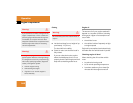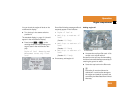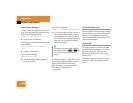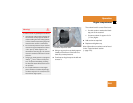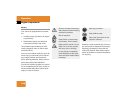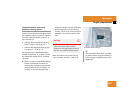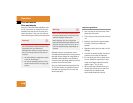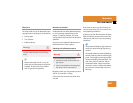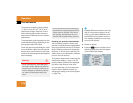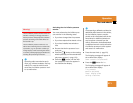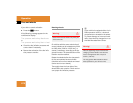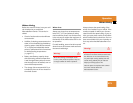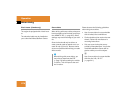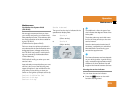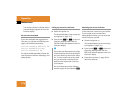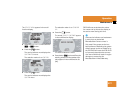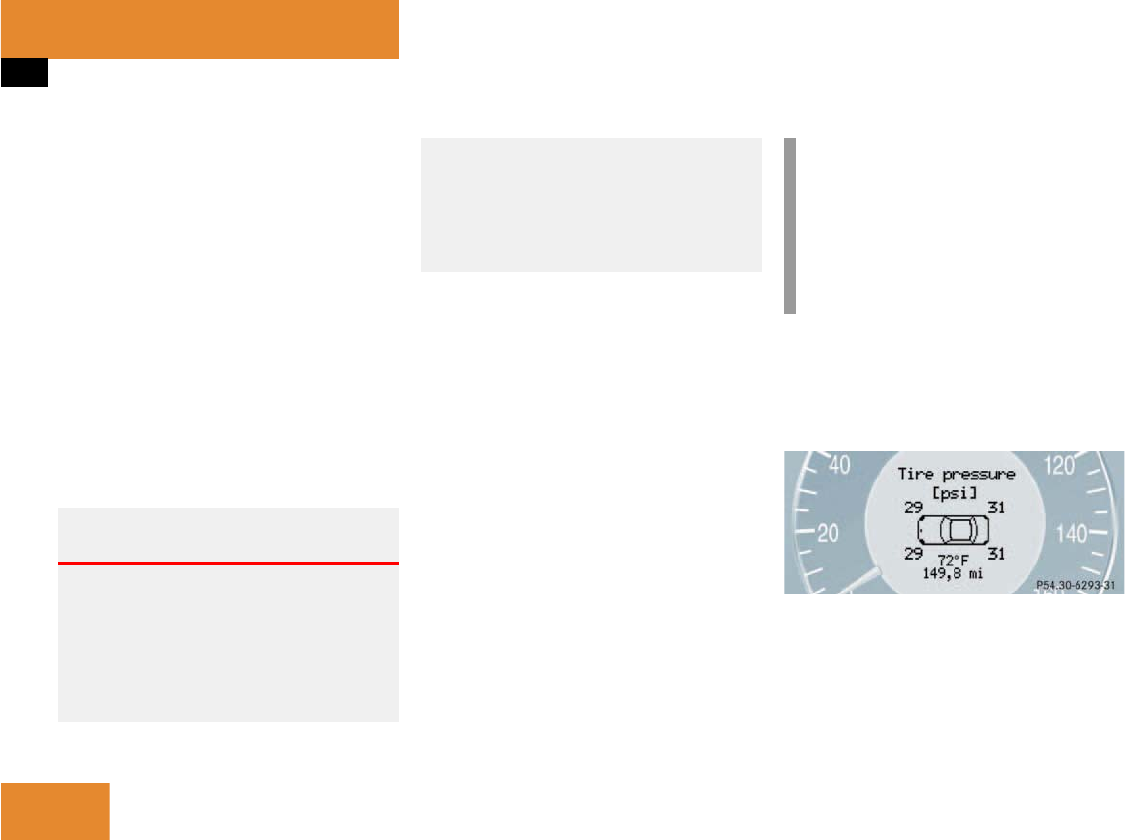
270
Operation
Tires and wheels
Tire pressure changes by approximately
1.5 psi (0.1 bar) per 18°F (10°C) of air
temperature change. Keep this in mind
when checking tire pressure where the
temperature is different from the outside
temperature.
Tire temperature and tire pressure are also
increased while driving, depending on the
driving speed and the tire load.
Check the spare tire periodically for condi-
tion and inflation. Spare tires will age and
become worn over time even if never used,
and thus should be inspected and replaced
when necessary.
Checking tire pressure electronically*
The tire inflation pressure monitor only
functions on wheels that are equipped with
the proper electronic sensors. It monitors
the tire inflation pressure, as selected by
the driver, in all four tires. A warning is is-
sued to alert you to a decrease in pressure
in one or more of the tires.
Tire pressure inquiries are made using the
multifunction display (
୴ page 121).The
present inflation pressures are displayed
only after a few minutes’ travel time.
You can select the unit of measurement
used for the tire inflation pressure by
changing the setting in the control system
(
୴ page 136).
̈ Switch on ignition.
̈ Press the k button until the current
inflation pressures for each tire appear
in the multifunction display.
Warning! G
Do not overinflate tires. Overinflating tires
can result in sudden deflation (blowout) be-
cause they are more likely to become punc-
tured or damaged by road debris, potholes
etc. Follow recommended inflation pres-
sures.
Do not overload the tires by exceeding the
specified vehicle capacity weight (as indicat-
ed by the label on the pillar in the driver’s
door opening). Overloading the tires can
overheat them, possibly causing a blowout.
i
Possible differences between the read-
ings of a tire pressure gauge of an air
hose, e.g. gas station equipment, and
the vehicle’s control system can occur.
The readings issued by the control sys-
tem are more precise.



